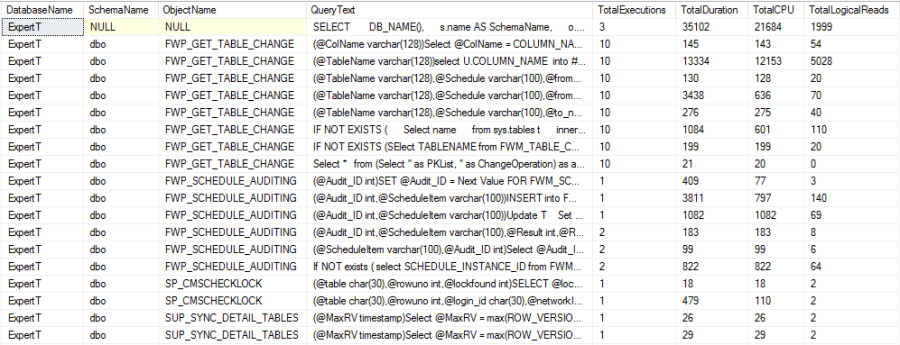This query returns information on the recent full backups taken for the current database. This query helps you to find out the backup sizes, backup timings, backup location etc.
SQL Query
SELECT TOP (30) bs.machine_name, bs.server_name, bs.database_name AS [Database Name], bs.recovery_model,
CONVERT (BIGINT, bs.backup_size / 1048576 ) AS [Uncompressed Backup Size (MB)],
CONVERT (BIGINT, bs.compressed_backup_size / 1048576 ) AS [Compressed Backup Size (MB)],
CONVERT (NUMERIC (20,2), (CONVERT (FLOAT, bs.backup_size) /
CONVERT (FLOAT, bs.compressed_backup_size))) AS [Compression Ratio], bs.has_backup_checksums, bs.is_copy_only, bs.encryptor_type,
DATEDIFF (SECOND, bs.backup_start_date, bs.backup_finish_date) AS [Backup Elapsed Time (sec)],
bs.backup_finish_date AS [Backup Finish Date], bmf.physical_device_name AS [Backup Location], bmf.physical_block_size
FROM msdb.dbo.backupset AS bs WITH (NOLOCK)
INNER JOIN msdb.dbo.backupmediafamily AS bmf WITH (NOLOCK)
ON bs.media_set_id = bmf.media_set_id
WHERE bs.database_name = DB_NAME(DB_ID())
AND bs.[type] = 'D' -- Change to L if you want Log backups
ORDER BY bs.backup_finish_date DESC OPTION (RECOMPILE);
Output


The following query returns the Last Backup Date Time for each database on your Instance.
SQL Query
SELECT
db.Name AS DatabaseName,
COALESCE(CONVERT(VARCHAR(19), MAX(bs.backup_finish_date), 120),'None') AS LastBackUpDateTime
FROM
sys.sysdatabases db
LEFT OUTER JOIN msdb.dbo.backupset bs
ON bs.database_name = db.name
GROUP BY
db.Name;
Output

The following query returns the databases that have never had a backup, or the current backup is over 24 hours old.
SQL Query
SELECT
db.Name AS DatabaseName,
COALESCE(CONVERT(VARCHAR(19), MAX(bs.backup_finish_date), 120),'None') AS LastBackUpTime
FROM
sys.sysdatabases db
LEFT OUTER JOIN msdb.dbo.backupset bs
ON bs.database_name = db.name
GROUP BY
db.Name
HAVING
MAX(bs.backup_finish_date) < DATEADD(dd,-1,GETDATE())
OR MAX(bs.backup_finish_date) IS NULL;
Output

By reviewing the output from these scripts, you will be able to identify the last backup for the databases on your instance.
References
https://technet.microsoft.com/en-us/library/ms186299(v=sql.110).aspx
https://technet.microsoft.com/en-us/library/ms190284(v=sql.110).aspx








